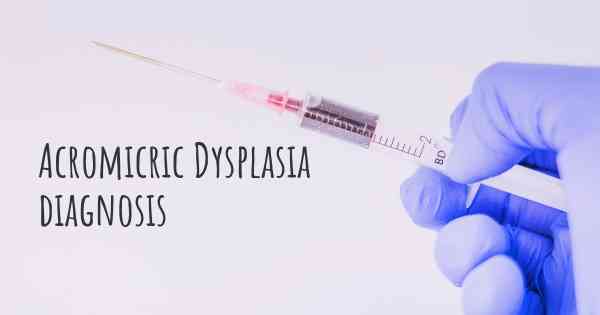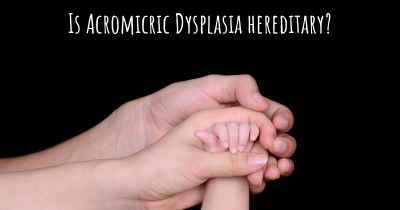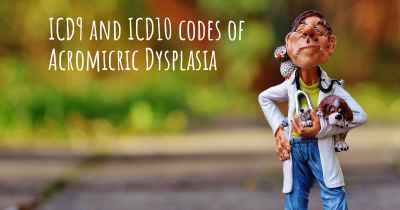How is Acromicric Dysplasia diagnosed?
See how Acromicric Dysplasia is diagnosed. Which specialists are essential to meet, what tests are needed and other useful information for the diagnosis of Acromicric Dysplasia

Acromicric dysplasia is a rare genetic disorder characterized by skeletal abnormalities and distinctive facial features. Diagnosing this condition involves a combination of clinical evaluation, radiographic imaging, and genetic testing.
Clinical Evaluation: The first step in diagnosing acromicric dysplasia is a thorough clinical evaluation by a healthcare professional. They will assess the patient's medical history, conduct a physical examination, and look for characteristic signs and symptoms of the condition. These may include:
- Short stature
- Delayed bone age
- Abnormalities in the hands and feet, such as short fingers and toes
- Distinctive facial features, including a round face, a broad nasal bridge, and a small jaw
- Joint stiffness and limited range of motion
Radiographic Imaging: X-rays play a crucial role in the diagnosis of acromicric dysplasia. They help visualize the skeletal abnormalities associated with the condition. X-ray findings may include:
- Shortening and thickening of the long bones
- Delayed bone maturation
- Abnormalities in the bones of the hands and feet
- Spinal abnormalities
Genetic Testing: Once clinical evaluation and radiographic imaging suggest a diagnosis of acromicric dysplasia, genetic testing is performed to confirm the presence of specific genetic mutations. The most common genetic cause of acromicric dysplasia is a mutation in the FBN1 gene, which provides instructions for producing a protein called fibrillin-1. This protein is essential for the formation of connective tissues in the body. Genetic testing may involve:
- Gene sequencing: This technique analyzes the DNA sequence of the FBN1 gene to identify any mutations or abnormalities.
- Gene deletion/duplication analysis: This test looks for larger genetic changes, such as deletions or duplications of the FBN1 gene.
Genetic testing not only confirms the diagnosis of acromicric dysplasia but also helps in identifying affected individuals within a family and providing genetic counseling.
Conclusion: Acromicric dysplasia is diagnosed through a combination of clinical evaluation, radiographic imaging, and genetic testing. Clinical evaluation involves assessing the patient's medical history and physical characteristics, while radiographic imaging helps visualize skeletal abnormalities. Genetic testing, including gene sequencing and deletion/duplication analysis, confirms the presence of specific genetic mutations. Early diagnosis is crucial for appropriate management and support of individuals with acromicric dysplasia.








